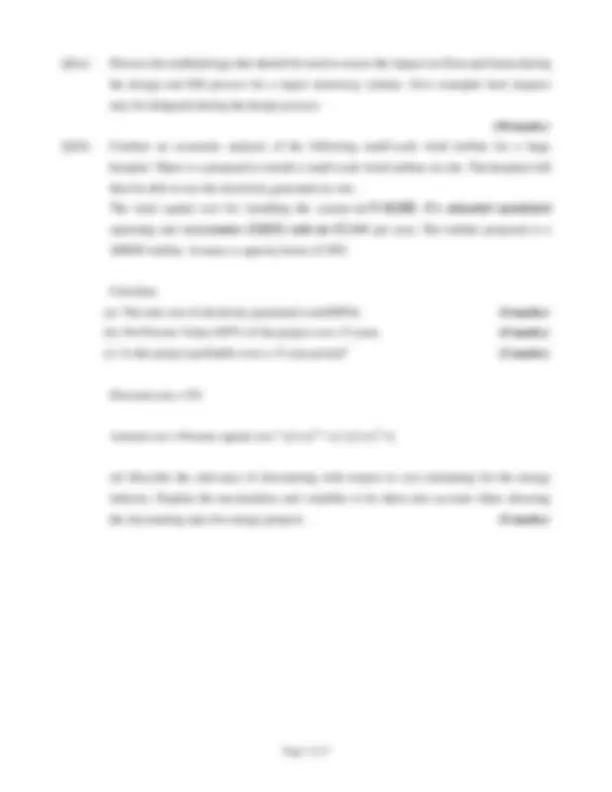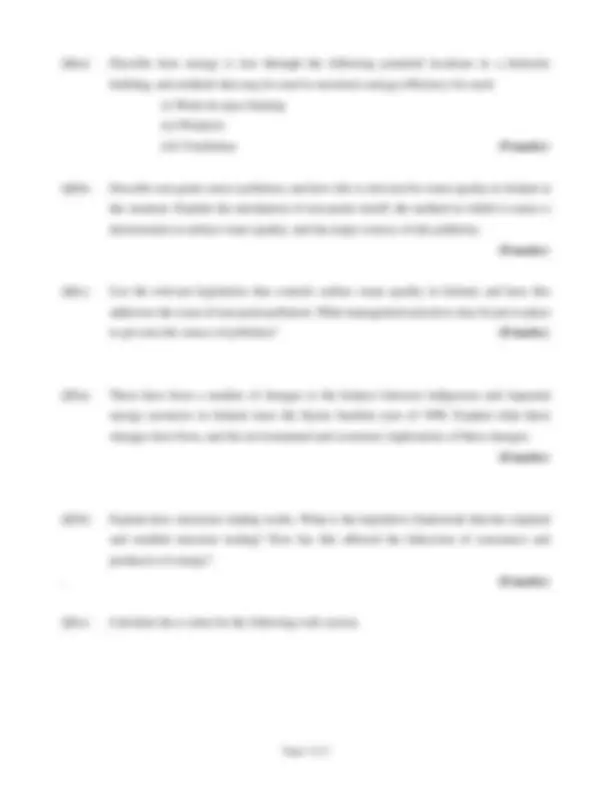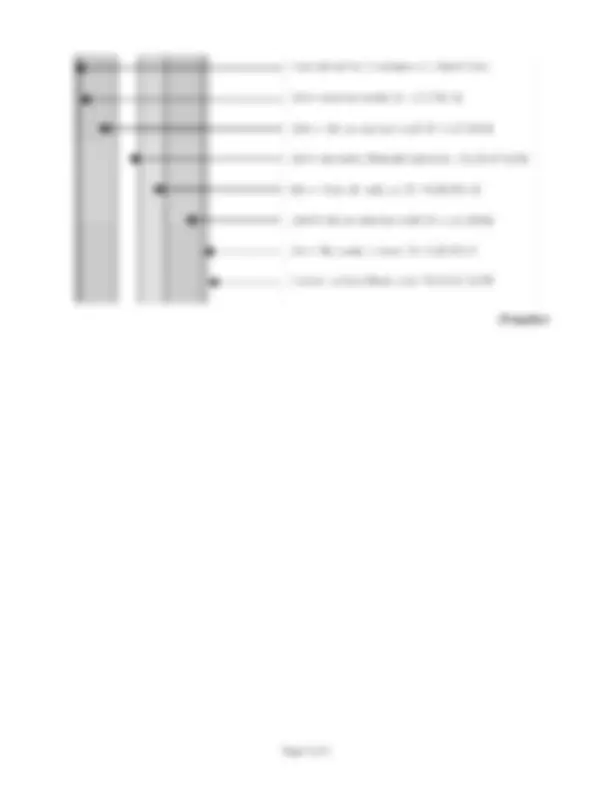





Study with the several resources on Docsity

Earn points by helping other students or get them with a premium plan


Prepare for your exams
Study with the several resources on Docsity

Earn points to download
Earn points by helping other students or get them with a premium plan
Community
Ask the community for help and clear up your study doubts
Discover the best universities in your country according to Docsity users
Free resources
Download our free guides on studying techniques, anxiety management strategies, and thesis advice from Docsity tutors
Main points of this past exam are: Life Cycle Analysis Process, Alternative Energy Technologies, Landfill Site Selection Process, Anaerobic Digestion Processes, Treatment of Solid Waste, Composting Process, Electrical and Heat Energy
Typology: Exams
1 / 5

This page cannot be seen from the preview
Don't miss anything!




Semester 2 Examinations 2011/
Module Code: CIVL
School: Building and Civil Engineering
Programme Title: Bachelor of Engineering in Civil Engineering
Programme Code: CCIVL_7_Y 3
External Examiner(s): Ms M Kyne, Mr J Murphy Internal Examiner(s): Mr TL O’Driscoll
Instructions: Answer four questions.
Duration: 2 Hours
Sitting: Summer 2012
Requirements for this examination:
Note to Candidates: Please check the Programme Title and the Module Title to ensure that you have received the correct examination paper. If in doubt please contact an Invigilator.
Q1(a) Describe the life cycle analysis process, and how it may be used when assessing alternative energy technologies.
(8 marks)
Q1(b) Describe the landfill site selection process as set out by the EPA guidance and national legislation. In your opinion, what are the most important aspects of the site selection process? (9 marks)
Q1(c) A major disadvantage of some renewable energy generation technologies is that they do not provide power at the time it is required on the grid. Discuss this phenomenon, and methods that may used to address the problem. (8 marks)
Q2(a) Describe the anaerobic digestion processes which may be used for the treatment of solid waste. (6 marks)
What are the by-products of this system, and how are they utilised? (4 marks)
Describe the composting process that may be used for the management of biodegradable waste. Compare the anaerobic digestion process to standard composting, describing the advantages and disadvantages of each. (5 marks)
Q2(b) Describe the various methods, both small and large scale, that are used to convert solar energy into electrical and heat energy. Describe how the technology works, and give examples where this is used. (10 marks)
Q4(a) Describe how energy is lost through the following potential locations in a domestic building, and methods that may be used to maximise energy efficiency for each: (i) Water & space heating (ii) Windows (iii) Ventilation (9 marks)
Q4(b) Describe non-point source pollution, and how this is relevant for water quality in Ireland at the moment. Explain the mechanism of non-point runoff, the method in which it causes a deterioration in surface water quality, and the major sources of this pollution. (8 marks)
Q4(c) List the relevant legislation that controls surface water quality in Ireland, and how this addresses the issue of non-point pollution. What management practices may be put in place to prevent this source of pollution? (8 marks)
Q5(a) There have been a number of changes to the balance between indigenous and imported energy resources in Ireland since the Kyoto baseline year of 1990. Explain what these changes have been, and the environmental and economic implications of these changes. (8 marks)
Q5(b) Explain how emissions trading works. What is the legislative framework that has required and enabled emission trading? How has this affected the behaviour of consumers and producers of energy?
. (8 marks)
Q5(c) Calculate the u-value for the following wall section.
(9 marks)